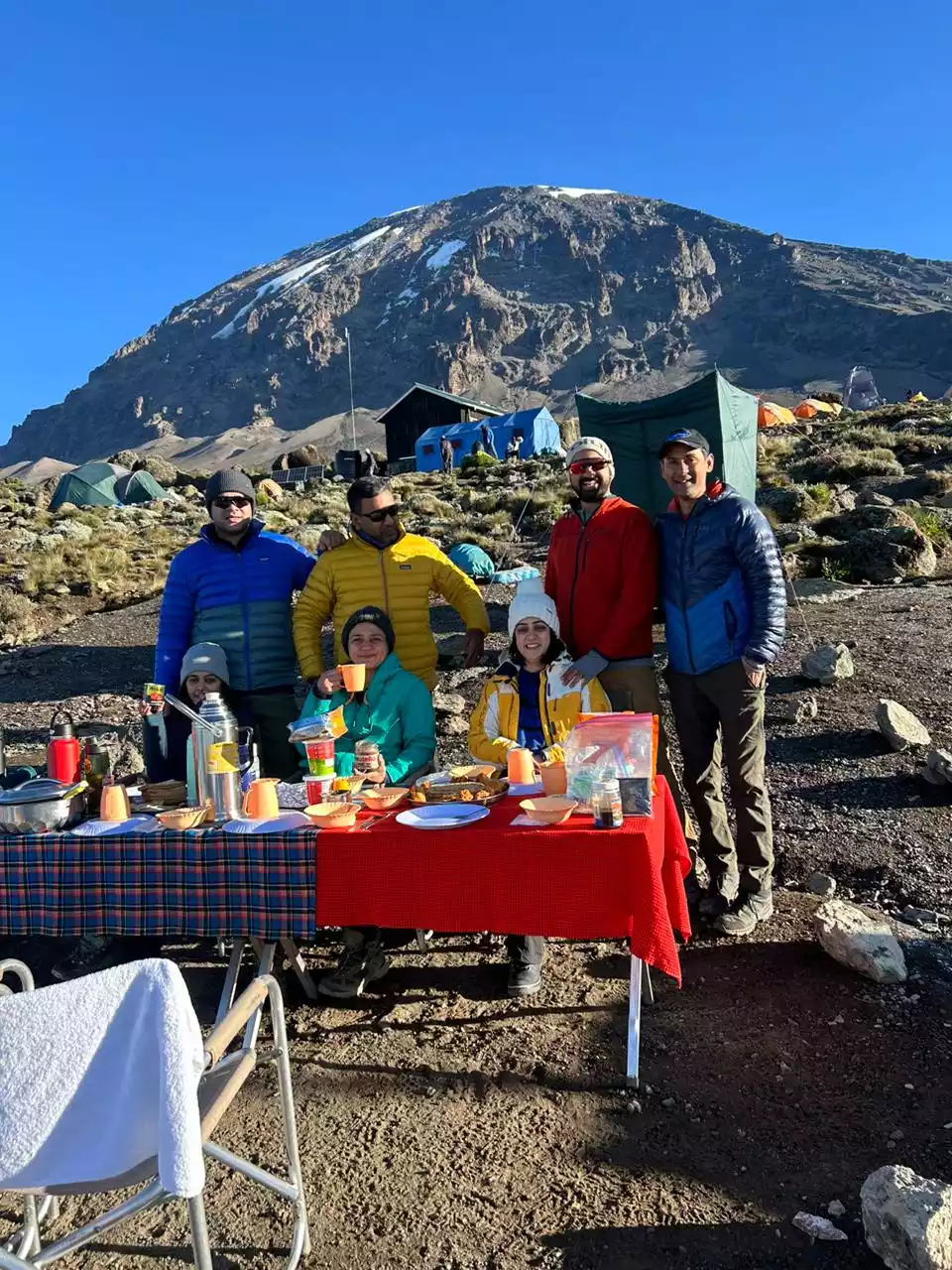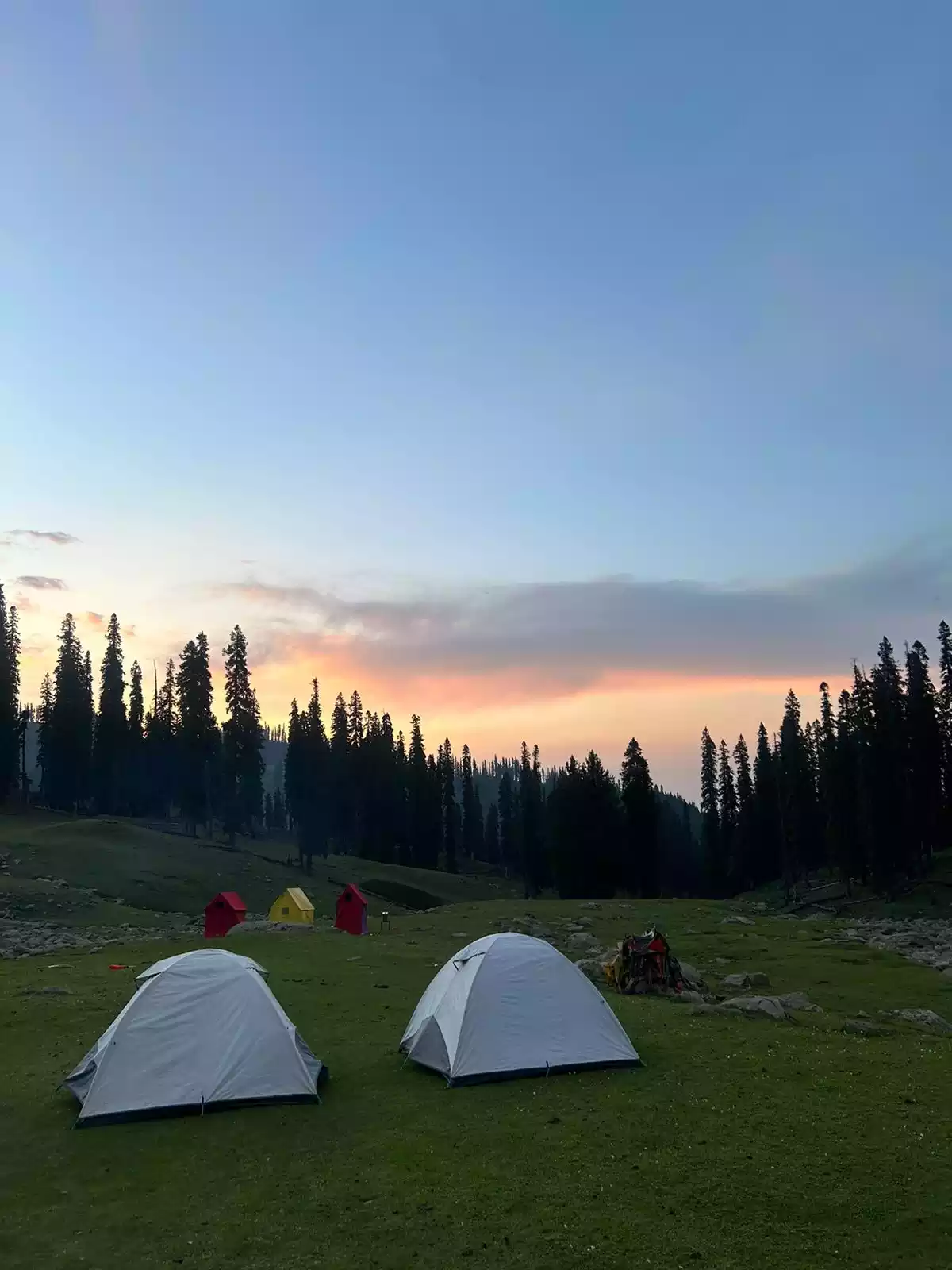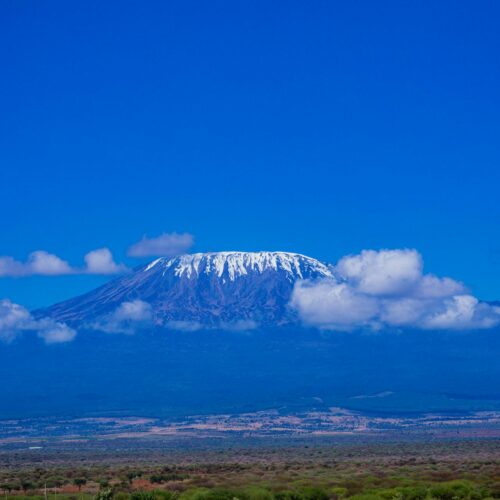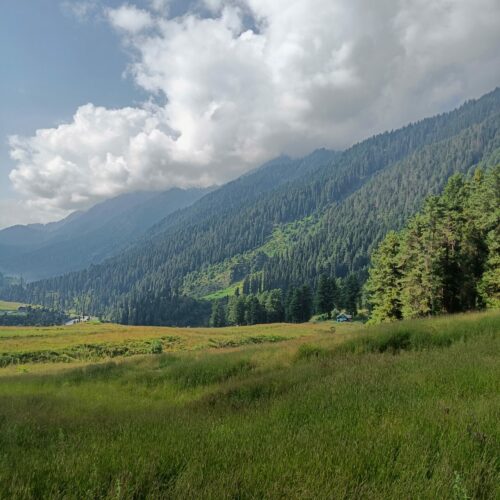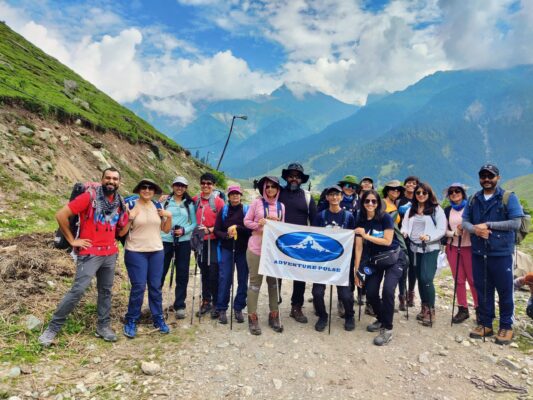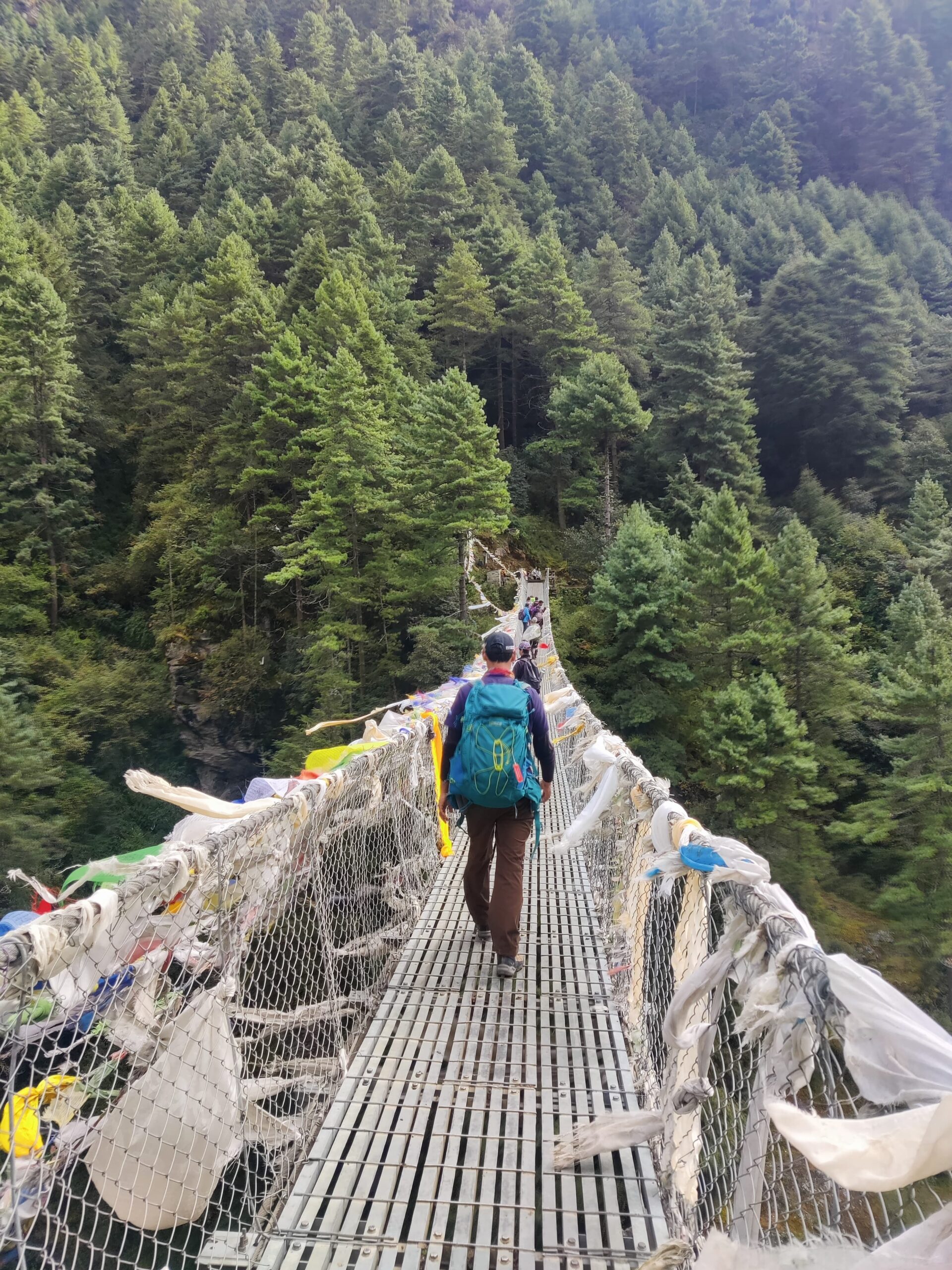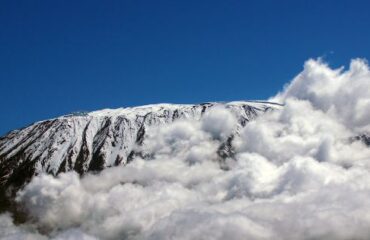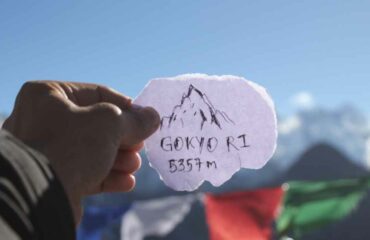
The third leg of the Everest Base Camp trek, from Namche Bazaar to Debuche via Tengboche Monastery, is one of the most scenic and culturally enriching sections of the entire journey. Spanning around 10 kilometers (6 miles), this part of the trek takes you through a mix of forested paths, steep ascents, and gentle descents, all while providing stunning panoramic views of the Himalayas.
The trek offers trekkers the opportunity to visit Tengboche Monastery, one of the most important Buddhist sites in the Khumbu region, and a place steeped in history and spiritual significance. Along the way, you’ll also experience the dramatic shift in altitude and terrain as you ascend toward higher altitudes.
Let’s dive into the specifics of this part of the trek. We’ll cover everything from the history of Tengboche Monastery to the terrain, altitude gain, views, and more. We’ll also take a closer look at Dingboche, where you’ll spend the night after the trek from Namche to Debuche.

Trekking from Namche to Debuche: Terrain, Altitude, and Himalayan Views
As you leave Namche Bazaar (3,440 meters / 11,286 feet), your journey to Debuche (3,820 meters / 12,533 feet) via Tengboche Monastery is a relatively long but rewarding section of the trek. The path initially descends from Namche, and you’ll pass through Sanasa and other small settlements before gradually climbing up to Tengboche. This long day is typically divided into the pre lunch and post lunch sections. The pre-lunch to your lunch spot at Phunkitanga is much easier. The walk to Phunkitanga is relatively a straight walk with some descent. Once again you will be crossing some suspension bridges on the trail and make way deeper in to the valley.
You are expected to reach your lunch spot by around 10:30/11:30 am depending on the pace of the group. After having hot lunch and resting for a while, you need to mentally and physically prepare for the next part of the walk. The post lunch part of the walk is a long dreading walk which comprises of a major ascent. The ascent to reach the Tengbuche Monastery is a minimum 2 hour long ascent that will test your stamina and endurance.

The path goes into a spiral with multiple turns, feeling like a never ending adventure. However, keeping your mind calm and being patient with the walk will make it manageable. Though the ascent is a long one, its not steep and arduous. It’s a well marked trail and will give you ample resting spots to sit and relax. You will be able to to witness beautiful mountain views while you walk alongside the tree line. Depending on the season, this trail will also allow you to see the Rhododendron flowers blooming on the sides.
Terrain and Altitude Gain
As you trek from Namche to Debuche, you’re moving through a region shaped by centuries of glacial movement. The landscape is rugged, with dramatic ridgelines, steep valleys, and rocky outcrops.
As mentioned above, the trail from Namche to Tengboche is a mixture of moderate ascents and descents, which can be physically demanding. The first part of the trek involves a gradual descent to the Dudh Koshi River, where you’ll cross a suspension bridge. From here, the trail climbs steeply through dense forests of pine, juniper, and rhododendron, offering plenty of shade and cool air as you ascend.
The trail then opens up as you approach Tengboche Monastery. The final approach to the monastery is a steep climb that rewards you with incredible views of the surrounding peaks. At an altitude of 3,867 meters, you’ll have gained significant elevation from your starting point at Namche, so be mindful of your energy levels and pace to prevent altitude sickness.
After visiting Tengboche Monastery, you can attend the 4 pm evening prayers, which are about 15-20 minutes away. Trekkers often meditate during this break. If prayers and meditation aren’t your preference, a café across from the monastery serves coffee, cakes, pastries, and snacks like burgers and French fries.

Once you are done resting, praying and enjoying the delicacies, the trail continues downhill to Debuche, where you will spend the night. The descent is more gradual and in our opinion one of the most beautiful walks of the entire trek. The downhill to Debuche is very comfortable an serene at the same time. It feels as though you have been transcended to the beautiful landscapes from the Harry Potter series. The stay at Debuche offers an opportunity to relax after a day of hiking. From Debuche, you’ll also get your first views of Ama Dablam, one of the most stunning mountains in the region, as well as Everest, which will soon be closer in sight as you approach higher altitudes.
Sensory Experiences Along the Trek
As you walk along the trail, you’ll be surrounded by a diverse range of flora and fauna. The dense forests of rhododendron, pine, and juniper provide bursts of color and fresh greenery, while the higher altitudes offer a more barren, rocky landscape. The air is crisp and cool, particularly in the morning and evening, with the scent of fresh pine and the earthy smell of damp soil filling your senses.
When you pass through the villages and monasteries, the scent of incense from burning juniper and sandalwood offers a subtle, calming fragrance. The higher you go, the thinner the air becomes, and you’ll begin to notice the difference in the quality of oxygen, which can be quite invigorating.
Along the way, you’ll hear the sounds of nature—rustling leaves, birdsong, and the wind whispering through the trees. The faint dinging of yak bells echoes as pack animals traverse the trail, and the occasional sound of a monastery bell ringing in the distance adds a spiritual dimension to the atmosphere.
While trekking from Namche to Tengboche and then on to Debuche, there are several places where you can stop for a rest and enjoy a meal. One popular spot for lunch is Phunki Thanga, a small village situated about halfway to Tengboche. Here, you can find several simple teahouses serving dal bhat, momo (dumplings), or a hearty noodle soup to keep you energized. If you’re feeling adventurous, try a Sherpa stew, a warming and satisfying dish made of vegetables, meat and strips of dough.
The History of Tengboche Monastery: A Spiritual Hub in the Himalayas
Tengboche Monastery, also known as Dawa Choling Gompa, is one of the most iconic and revered Buddhist monasteries in the Khumbu region. Located at an altitude of 3,867 meters (12,687 feet), it’s perched on a ridge surrounded by a vast expanse of forests, rivers, and the stunning backdrop of the Himalayan peaks. The monastery was originally built in 1916 by Lama Gulu, a Sherpa of the region, and it became an important spiritual center for the Sherpa people.
Over the years, Tengboche Monastery has been a site of cultural and religious significance. The monastery has undergone several reconstructions, particularly after it was destroyed by a fire in 1989. It was quickly rebuilt and continues to function as a center for Buddhist practices and teachings. The current monastery is an impressive structure. It features a large prayer hall adorned with intricate wall paintings, Buddha statues, and colorful prayer flags.
Today, Tengboche remains a spiritual hub for the local Sherpa community. It holds a central place in the cultural life of the region. Trekking groups often stop here to enjoy the serenity and beauty of the monastery. Many visit to receive blessings before continuing their journey toward Everest. The annual Mani Rimdu festival, takes place here every fall and draws both locals and trekkers alike. Visiting the monastery allows trekkers to experience the spiritual ambiance. And it also to connect with the rich Buddhist traditions that have shaped the Khumbu Valley.
Himalayan Views Along the Way
One of the most exciting parts of this trek is the spectacular views of the Himalayan mountains. From the start in Namche, the trail offers distant views of peaks like Ama Dablam, Lhotse, and Everest, but as you approach Tengboche, the views become even more breathtaking.
From Tengboche, you’ll be treated to panoramic views of the Everest massif. In particular, Mount Everest itself, along with Lhotse, Nuptse, and Ama Dablam, create a stunning mountain backdrop. The vastness and beauty of the Himalayas are awe-inspiring. The early mornings at Tengboche are particularly magical, with the peaks bathed in the soft golden light of sunrise.
As you trek towards Debuche, the views continue to evolve. From Debuche, you’ll also get great views of Ama Dablam and the Imja Valley, as you continue towards Dingboche. The landscape features alpine meadows, rocky terrain, and rugged cliffs. Every turn offers new vistas of towering peaks.
Staying Overnight in Debuche
Debuche often gets overshadowed by other stops, but it remains quaint, scenic, and one of our favorite spots to rest!
If the Tengboche monastery has piqued your curiosity, make sure to visit Debuche’s nunnery. Lama Gulu founded it in 1923. The ancient prayer wheels, mani stones, and stupas highlight the deep-rooted Buddhist traditions of the region.
Despite its small size, Debuche caters well to trekkers with several lodges and teahouses. Here are some popular accommodation options:
- Rivendell Lodge
Rivendell Lodge is among the most recommended stays in Debuche, offering warm hospitality and cozy rooms. The lodge features clean, comfortable bedding, hot showers, and a communal dining area. Here, trekkers can enjoy hearty meals while sharing stories of their journeys. - Ama Dablam View Lodge
This teahouse combines basic amenities with breathtaking views of the surrounding peaks. The welcoming hosts provide excellent service, making it a popular choice for budget-conscious trekkers. - Local Teahouses
Smaller teahouses in Debuche provide a more authentic experience for those who wish to connect with the local Sherpa community. While amenities are basic, the warmth and friendliness of the hosts make the stay memorable.
Parting Thoughts
Debuche’s understated charm makes it a must-visit on the trek to Everest Base Camp. Its serenity provides a perfect opportunity to rest, reflect, and immerse yourself in the spiritual essence of the Khumbu region. For trekkers, the journey to Debuche is a testament to the beauty of slow travel. Whether you’re seeking cultural enrichment, spiritual solace, or simply a quiet place to recharge, Debuche delivers an unforgettable experience.
We hope you get a good night of rest here. The trek is just going to get more and more intense!

